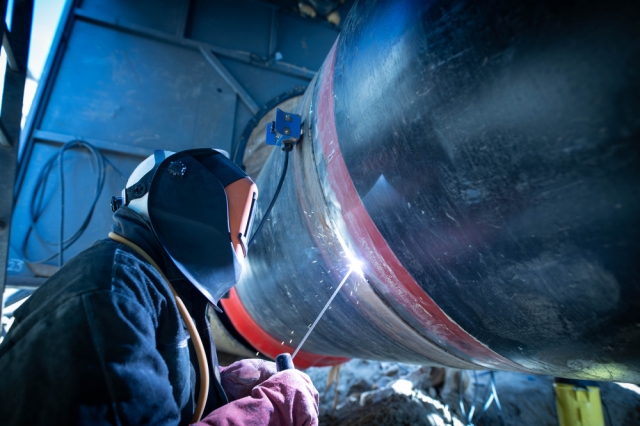Steel plate rolling is a fundamental process in the metal fabrication industry. This technique involves transforming flat steel plates into cylindrical, conical, or other curved shapes, which are essential in various industrial applications. From pressure vessels and storage tanks to pipelines and structural supports, steel plate rolling plays a key role in creating components that can withstand high pressures and complex mechanical stresses.
In this article, we will explore the steel plate rolling process, its benefits, common applications, and what to consider when choosing a steel plate rolling provider.
What is Steel Plate Rolling?
Steel plate rolling is the process of bending flat steel plates into different shapes using specialized rolling machines. This process applies controlled pressure to the steel, allowing it to be curved or formed to the desired specifications without breaking or cracking. The rolling machines use multiple rollers arranged in a specific pattern to achieve the necessary curvature.
Steel plate rolling is commonly used to produce cylinders, rings, cones, and other curved structures that are needed in industries such as construction, shipbuilding, energy, and manufacturing.
Types of Steel Plate Rolling Processes
There are several types of steel plate rolling processes, each designed to achieve specific results depending on the desired shape and thickness of the plate:
1. Cylindrical Rolling
This process involves rolling the steel plate into a cylindrical shape, typically used for fabricating pipes, tanks, and pressure vessels. The plate is rolled into a perfect circle, with tight tolerances to ensure a precise fit.
2. Cone Rolling
Cone rolling is used to create conical shapes from steel plates. This technique is common in industries like oil and gas, where conical transitions are needed for large vessels and equipment. Specialized machines and skilled operators are required to achieve the correct angles and tapering.
3. Multi-Radius Rolling
This technique involves rolling steel plates into complex shapes that have varying radii. Multi-radius rolling is useful for creating structures like architectural features, ducts, and components with intricate curvatures.
4. Hot and Cold Rolling
Steel plate rolling can be performed using either hot or cold rolling methods. In hot rolling, the steel plate is heated before rolling, making it more pliable and easier to shape. Cold rolling is done at room temperature and is often used for applications that require tight tolerances and smooth finishes.
Benefits of Steel Plate Rolling
Steel plate rolling offers several advantages for industrial and manufacturing applications:
- Precision Forming: Rolling allows for the precise shaping of steel plates into the desired curvature, ensuring that components meet exact specifications.
- Strength and Durability: Rolled steel plates retain their strength and structural integrity, making them suitable for high-pressure and heavy-load applications.
- Material Versatility: Steel plate rolling can be performed on various types of steel, including carbon steel, stainless steel, and alloy steel, providing flexibility for different projects.
- Cost Efficiency: Rolling is an efficient process that minimizes waste and allows for mass production of curved steel components at a lower cost.
- Customization: The rolling process can be customized to create unique shapes and sizes, allowing for versatility in design and application.
Common Applications of Steel Plate Rolling
Steel plate rolling is widely used in numerous industries and applications, including:
1. Pressure Vessels and Storage Tanks
Steel plate rolling is crucial in the fabrication of pressure vessels and storage tanks. These components are often cylindrical and require precise rolling to withstand the internal pressures of gases and liquids.
2. Pipelines
The oil, gas, and water industries rely on steel plate rolling to create large, durable pipes for transporting fluids over long distances. Rolled steel pipes are designed to handle high pressures and extreme environmental conditions.
3. Structural Supports
In construction, rolled steel plates are used to create curved beams and columns that support bridges, buildings, and other large structures. The rolling process ensures these components maintain their strength and stability.
4. Architectural Features
Steel plate rolling is often used to create unique architectural elements such as curved facades, domes, and arches. The ability to form steel into intricate shapes allows architects to design visually striking and structurally sound buildings.
5. Shipbuilding
The shipbuilding industry uses rolled steel plates for the construction of hulls, decks, and other curved structures that make up a ship’s framework. These components must be both strong and flexible to handle the stresses of marine environments.
Factors to Consider When Choosing a Steel Plate Rolling Provider
Selecting the right steel plate rolling provider is essential to ensure the success of your project. Here are some key factors to consider:
- Experience and Expertise: Look for a provider with extensive experience in steel plate rolling, particularly in the type of rolling your project requires (cylindrical, cone, etc.).
- Capabilities and Equipment: Ensure the provider has the appropriate machinery to handle the size, thickness, and complexity of your steel plates.
- Quality Control: Choose a provider with strict quality control measures to ensure that the rolled steel meets your specifications and industry standards.
- Customization Options: Select a provider who can offer custom rolling solutions tailored to your specific design and application needs.
- Project Timeline: Consider the provider’s ability to deliver your rolled steel components on time, especially for large or time-sensitive projects.
Conclusion
Steel plate rolling is an essential process for creating curved steel components that are used in a wide range of industries and applications. The precision, strength, and versatility of rolled steel make it an invaluable material for projects ranging from pressure vessels and pipelines to architectural designs and industrial equipment. By selecting a skilled and experienced steel plate rolling provider, you can ensure that your components meet the highest standards of quality and performance.






